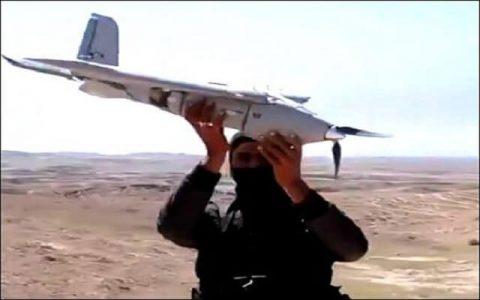
Islamic State terrorists are using drones to guide direct suicide car bombers in Iraq
Faced with a diminishing number of fighters, the Islamic State group is relying on retrofitted commercial drones to guide suicide car bombers to their targets and to launch small-scale airstrikes on Iraqi forces.
The extremist group is spending freely on drone technology as it faces pressure from coalition forces, hacking store-bought machines, applying rigorous testing protocols and mimicking tactics used by U.S. unmanned aircraft.
In all, a half-dozen storehouses IS used to make and modify drones have been found recently in Mosul, Iraqi military officials said.
The Associated Press this week visited the largest drone workshop uncovered so far, a warehouse in the Shura neighborhood. Scattered among stacks of paper were pieces of Styrofoam wings, fins and radio transmitters piled in the corners of the factory.
Most of the completed drones were destroyed by IS fighters as they retreated, Iraqi officers at the warehouse said. Spreadsheets the fighters left behind showed purchases totaling thousands of dollars a month for drone equipment.
One receipt dated a few months before the operation to reclaim Mosul began recorded the purchase of wires, silicon, electrical plugs, cables, rotors and GoPro cameras. Handwritten notes instructed IS drone operators to write daily “mission reports” and monthly reports “about the challenges and difficulties you face as well.”
All the accounts were headed “board of development and military manufacturing,” some sub-headed “air observation division.”
A cache of documents also obtained this month in a smaller makeshift factory by a researcher in Mosul indicates that the group is testing small drones – normally used as playthings – with deadly intent.
The researcher, Vera Mironova, said the drone paperwork she discovered signals a program for having machines make up for a shortage in manpower. The documents included part lists in English and Arabic. One file, marked “Tool Kit,” contained a checklist of several dozen essentials: GoPro and chargers; battery cable; laptop; explosives; and devices made up Items 1-5.
Mironova, a labor economist by training and a fellow at Harvard University’s Kennedy School of Government, said the use of drones to both drop explosives and to direct more deadly payloads was an adaptation to the decrease in the number of attackers available.
Early in the Mosul fighting, she said, suicide bombers tended to be deployed haphazardly more to terrorize than to kill. But it didn’t take long before IS needed a new approach.
Iraqi security forces report seeing IS surveillance drones as early as 2015 in the fight for Ramadi in Iraq’s western Anbar province.
The first hints of the expanded tactics came in early 2016, when Turkish forces in northern Iraq saw toy-like drones overhead. Within 15 minutes of the sighting, they were attacked by accurate incoming fire, according to Jonathan Schroden, director of the Center for Stability and Development at the Center for Naval Analyses.
“From there, it was pretty clear where that was headed,” Schroden said. “They will look to continue to mimic what the U.S. and Western militaries have done with drones. They would look to integrate the kill chain.”
With Mosul’s streets filled with debris, the drones can serve as a way for their operators to direct people on the ground – including suicide attackers – to an open path to bloodshed. The planes loaded with explosives do less actual damage, but can sow panic among troops fighting the extremists.
“First they come to observe and then they will return carrying bombs,” Maj. Firas Mehdi said, cautioning AP journalists who were traveling with the special forces unit in December to remain under cover.
Mehdi himself had been hit with shrapnel in his leg when a drone dropped a small bomb on his position a week earlier. A small, black rotary drone flew over their position from the IS-held neighborhood just a few hundred meters away. Two Iraqi special forces soldiers rushed Mehdi into a concrete house for cover while half a dozen more spread out into the street and fired wildly into the air.
An Iraqi special forces officer told the AP this week that at least three Iraqi troops had been killed by the drones and dozens injured. Iraqi special forces Brig Gen Haider Fadhil said in addition to conducting surveillance and dropping bombs, the drones were being used to guide car bombs in real time.
“They were giving instructions by radio to the suicide driver and following his progress” by video feed.
The little fixed-wing planes and choppers have appeared in several IS videos online, showing the drones observing Iraqi troop movements from the air and suicide car bombs hitting their targets.
An Iraqi intelligence officer, who spoke on condition of anonymity because he wasn’t authorized to speak to journalists, said he believes most of the drone parts were being purchased in Turkey and smuggled into Iraq through Syria, while others were largely made from scratch.
Source: /Ekurd





